China Travels: Datong
This is the second post in about my tens days of traveling in northern China this summer. If you haven’t read the first post, I recommend you do so. This post is about my time in Datong, the provincial capital of Shanxi. I was originally going to include Wutaishan in this post as well, but I felt the Datong portion was long enough as is. Enjoy!
I woke up in my three-person suite in Datong craving knife-cut noodles (刀削面). Knife-cut noodles are noodles that are cut on a board such that the momentum from the knife propels the noodles into a pot of boiling water (this picture explains it pretty well). There are many variations on the broth and toppings for the noodles, but most of them are delicious. I was introduced to knife-cut noodles by a friend at the Renmin University cafeteria, and got hooked on the tomato and egg soup variety. Luckily, Datong is famous for its knife-cut noodles. I excitedly set out for a bowl of authentic Shanxi knife-cut noodles. I also needed to buy a bus ticket to Wutaishan for the next day, so I headed towards the bus station.
On the way to the bus station I passed a Bank of China, which is one of the few banks in China that reliably accepts foreign ATM cards, and I decided to grab some cash. After successfully withdrawing cash, but with my debit card still sitting in the ATM slot, I stood in front of the ATM and struggled to put the cash into my tourist organizer pouch, which, for all its stylistic shortcomings, worked really well for holding my passport and cash (I kept it in my pants pockets, though. Having a passport-shaped bulge under my shirt all day seemed to invite thieves more than just keeping it hidden in my pocket and tied to my belt). Suddenly, the ATM beeped three times and sucked my debit card back into the depths of the machine. Horrified, I stared at the screen, which read, “Time limit exceeded”. I stood in shock for an awful moment of silence when the machine spit out a paper receipt with a claim number and instructions about how to retrieve my card. If this had happened when the branch was closed at night I would have been royally screwed, but luckily I was able to walk right over to the service desk and explain to them that the ATM ate my card. They recued my card from the depths of the machine and I went on my way.
I continued on towards the bus station and found a small knife-cut noodle restaurant on the way. I stepped inside; the boss took one look at me and said “I bet you want knife-cut noodles”. I admitted that I was craving knife-cut noodles, and I ordered a large bowl. As I sat and waited for my noodles, I talked to an old man who was also sitting in the restaurant. A few minutes later my noodles came out, and I hungrily gobbled them down.
I finished by breakfast, made it to the bus station, and bought a ticket to the next day’s destination, Wutaishan. At this point I returned to my hotel, checked out of my three-person room and made a reservation for a single room that night. Done with the morning’s errands, I got on the bus to the Yungang caves.
Lonely Planet describes the Yungang caves as “One of China’s most superlative examples of Buddhist cave art”. The caves contain over 51,000 ancient statues, some of which are very, very large. A little more history from Lonely Planet:
“Carved by the Turkic-speaking Tuoba, the Yungang Caves draw their designs from Indian, Persian and even Greek influences that swept along the Silk Road. Work began in AD 460, continuing for 60 years before all 252 caves, the oldest collection of Buddhist carvings in China, had been completed.”
I arrived at the caves and found my way to the entrance building. The Yungang caves are Datong’s biggest tourist attraction, and my impression was that in an effort to increase tourism the Datong city government poured loads of money into the facilities around the caves. The visitor’s center was surprisingly modern and high-end, and, more impressively housed the cleanest and most luxurious public toilets I have ever seen in China. Without a hint of the wet floors or headache-inducing bleach fumes that usually plague public bathrooms in China, these bathrooms looked like they came out of a Four Seasons. If you need to pee in Shanxi, this is definitely the place to go.
But the bathrooms were not the only marvel of Chinese construction I saw that day. After I bought my absurdly overpriced entrance ticket (¥125 for adults, ¥70 for students - I guess the money goes towards the bathrooms), I started to walk towards the cave complex. Before, I reached the ancient caves, though, I went though a temple in the middle of a lake. The temple, and everything inside, was still under construction. I’m unclear about if they were modeling the temple off of one that was previously in the same place, or if they were just building a new one. Still, I liked the idea of a temple in a lake, and even though it was brand new it was still fun to walk through. It was also just another sign of the amount of effort the government is putting in to making Datong and the outlying Yungang caves a tourist destination. In addition to the clean bathrooms and newly-built temples, there were free shuttles to bring people up and down from the caves, all of the roads and paths were newly built and very well-maintained, and the surrounding areas had at few acres of newly-planted trees. The government’s efforts have paid off: the Yungang caves were one of the best-run tourist attractions I have seen in China. (For more information about Datong's recent renovations I highly suggest you read this article by Ian Johnson in the New York Review of Books.)
One of the first caves I went into, Cave 5, contained a 55.7 ft (17m) tall sitting Buddha statue carved out of the cave. This Buddha was the biggest in the Yungang caves, and was probably one of the biggest Buddhas I’ve ever seen.
I visited all of the caves that were open (some were closed for restoration work), and while some were larger and grander than others, they were all extraordinarily intricate and impressive. It’s hard to imagine how much work must have gone into carving those caves. With nothing else scheduled for the day, I lazily wandered around the caves admiring the carvings. Check out the photos below to get an idea of what these caves looked like. I’ve also included a slideshow if you want to see even more.
Sadly, some of the Buddhas’ faces were smashed off by the Red Guard during the Cultural Revolution. In one of the caves the characters “大同八中” (Datong Number 8 High School) were painted in red on the side of the wall by the Red Guard from the local high school when they came through.
After I finished looking around the Yungang caves, I took the bus back to downtown Datong. On the way I passed by the Datong Old Town, and decided to get out and check it out. “Old Town” is actually a bit of a misnomer because most of the area was torn down and rebuilt into a retail area in the past few years (a less successful effort by the Datong government to increase tourism). I did manage to find a few blocks of the old Old Town; much like Beijing’s old town, the authentic part of Datong’s Old Town was comprised of hutongs and courtyard houses. Unfortunately, a lot of the Old Town looked pretty run down, and while it’s hard to tell for sure without going into the courtyards themselves, it looked to me like there were not a lot of people renovating courtyard homes into luxury historic homes like you see in Beijing. After exploring the old town and a nearby street market I headed back to my hotel.
The not-so-ancient Datong City wall, which was either being heavily retrofitted or just reconstructed from scratch. The walls are thirty-nine feet high and sixty feet wide at the base (NYROB).
The front of a building in Datong's Old Town. I believe the 征 characters are the same as 拆 - which basically means it's marked for demolition, but I'm not 100% sure about that.
A storefront in Datong's Old Town. The sign reads "Knife-cut noodles" (left) and "Pressed Bean Noodles" (right) (I've actually never had the dish on the right before so I'm not sure if that translation is correct).
An old man enters a courtyard home in the Old Town in Datong, Shanxi, China.
A man reads a magazine at an outdoor street market outside of Datong's city walls.
A woman keeps the flies away (?) from her meat at a street market outside of Datong's city walls.
One thing that surprised me traveling in both Shanxi and Inner Mongolia was how much attention I attracted. In many parts of Beijing, especially around Wudaokou and on college campuses, foreigners are common and nobody gives them a second glance. In areas outside of Beijing, however, there are far fewer foreigners. As a foreigner traveling alone, I was constantly getting bombarded with requests to take photos with people or to exchange contact information so I could help somebody study English. On the bus back to my hotel, a middle-aged woman on one side of me and her daughter on the other side of me were talking about me right in front of my face. A few minutes into the conversation one of the asked “Do you think he speaks Chinese?” I smiled and politely interjected with “Yeah, I can speak Chinese”. Slightly embarrassed but still eager to make conversation, the mother insisted I give her my phone number and email so that I could teach her English in the future. Later that night, a waitress at the restaurant I was eating at approached me and asked for my email, again so that she could practice her English. Most of these people never end up contacting me – out 10+ people I gave my email during my travels only one person ended up emailing me. It got to the point where I started to allot extra time to my schedule to compensate for the time spent taking pictures with Chinese people. For me, this was all a reminder that while Beijing and Shanghai have become relatively international, foreigners are still an anomaly in most of China.
Restaurant workers rest outside on a side street.
I spent the rest of the night catching up with friends and family at an internet café and went to bed early – I had to catch a 7:30 am bus to Wutaishan the next day.
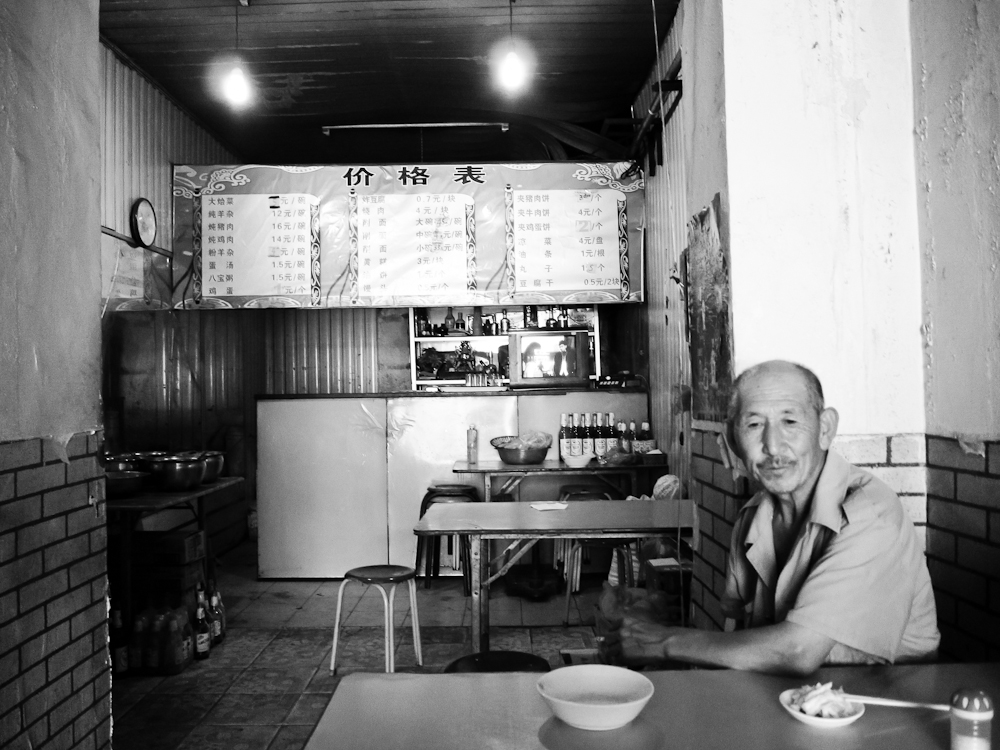




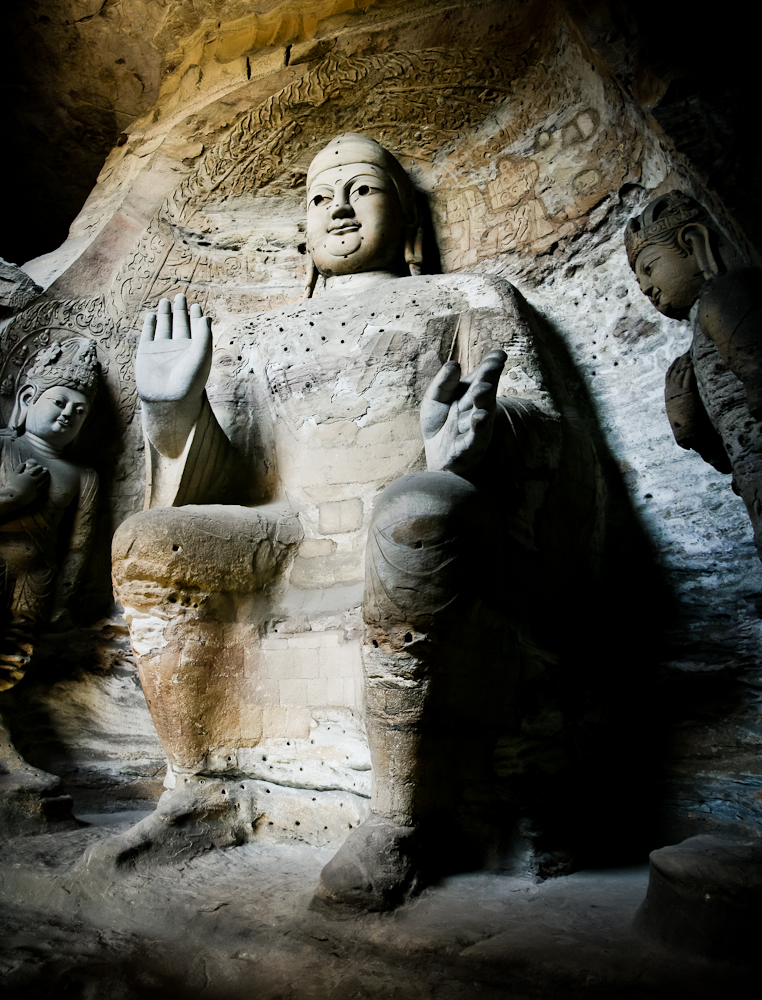
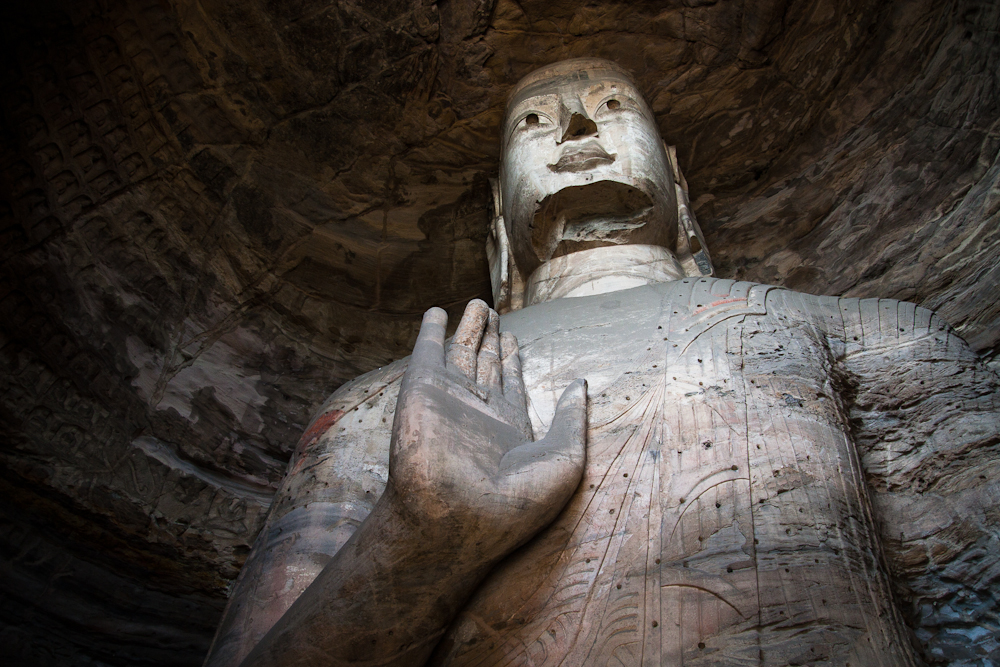
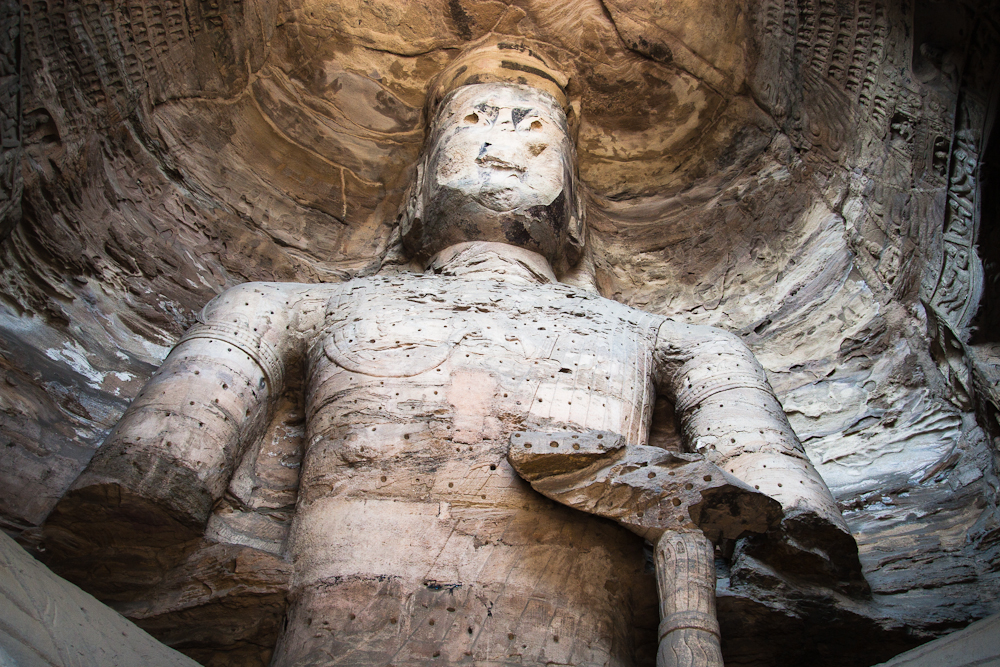


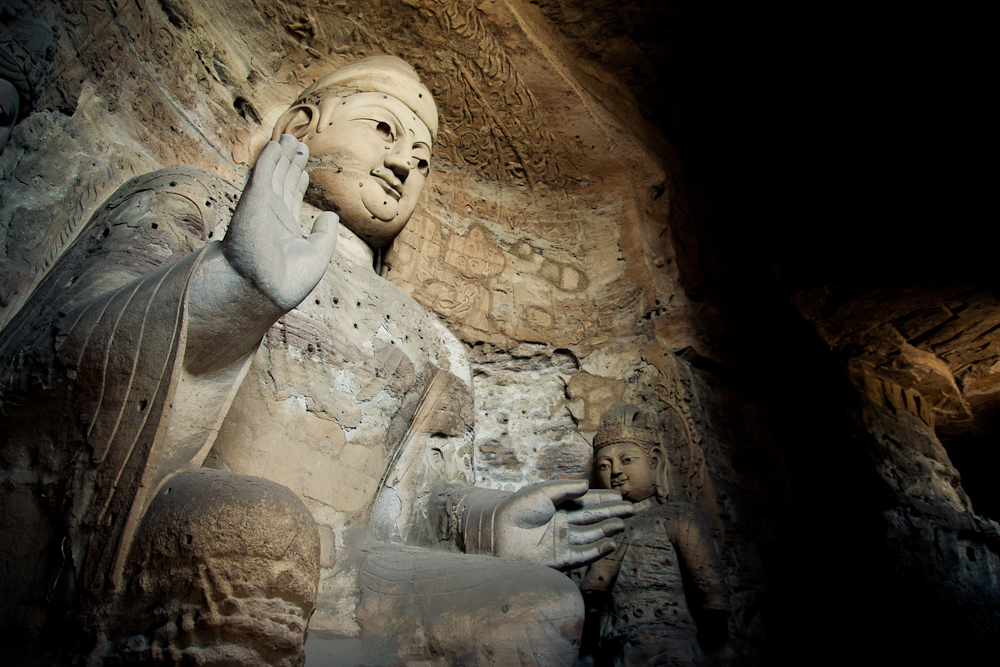



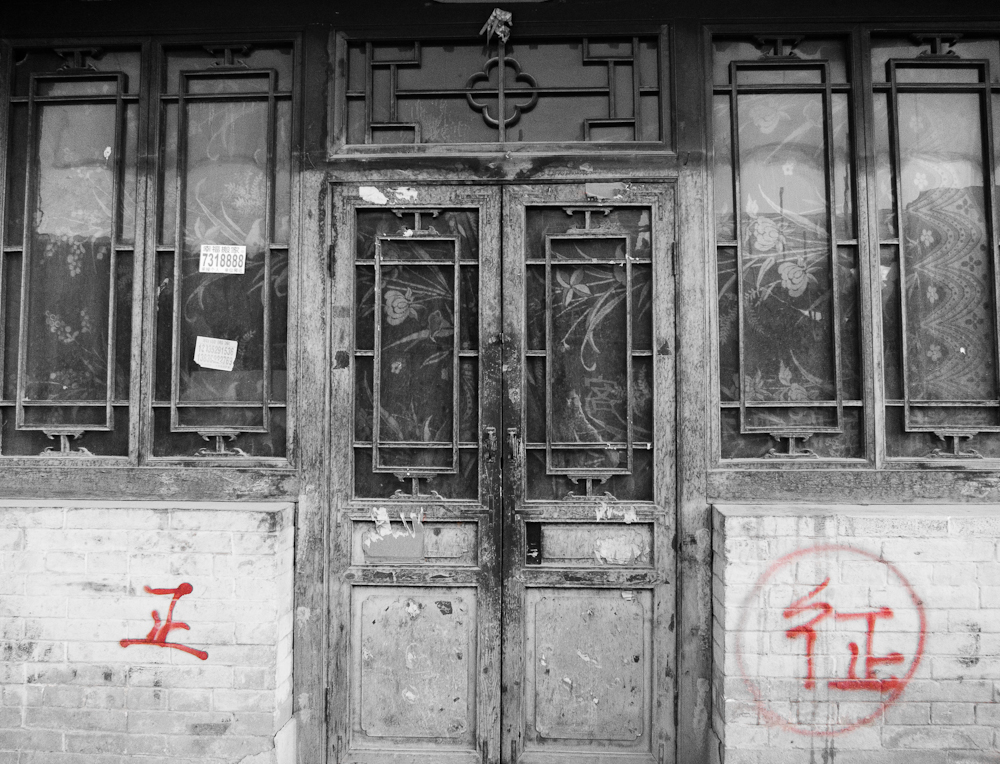
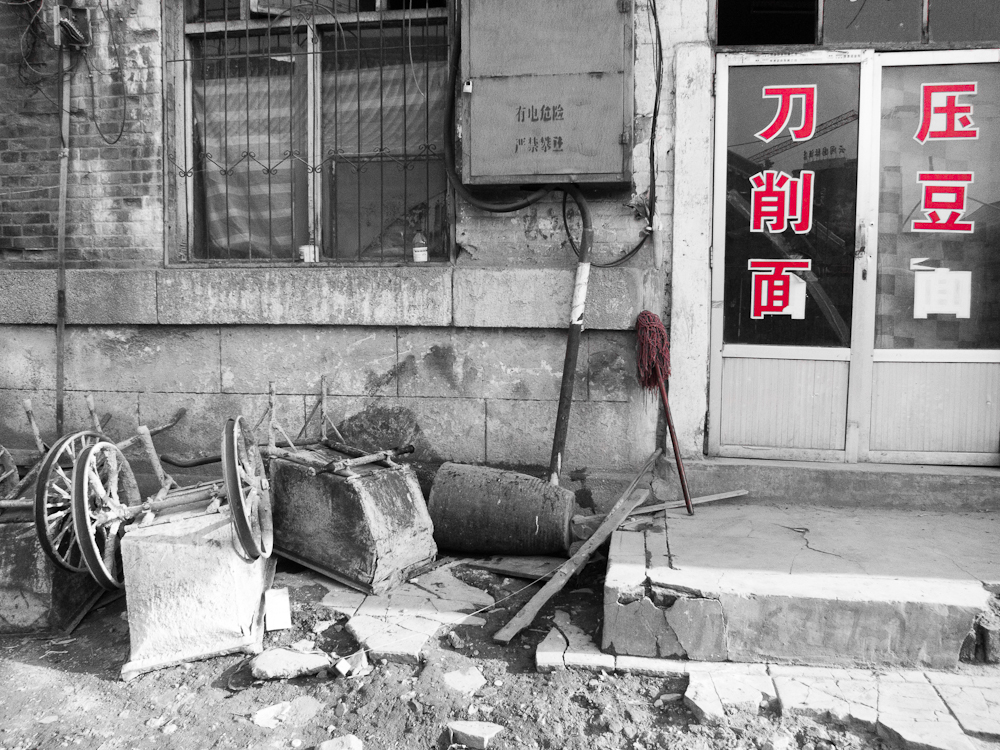
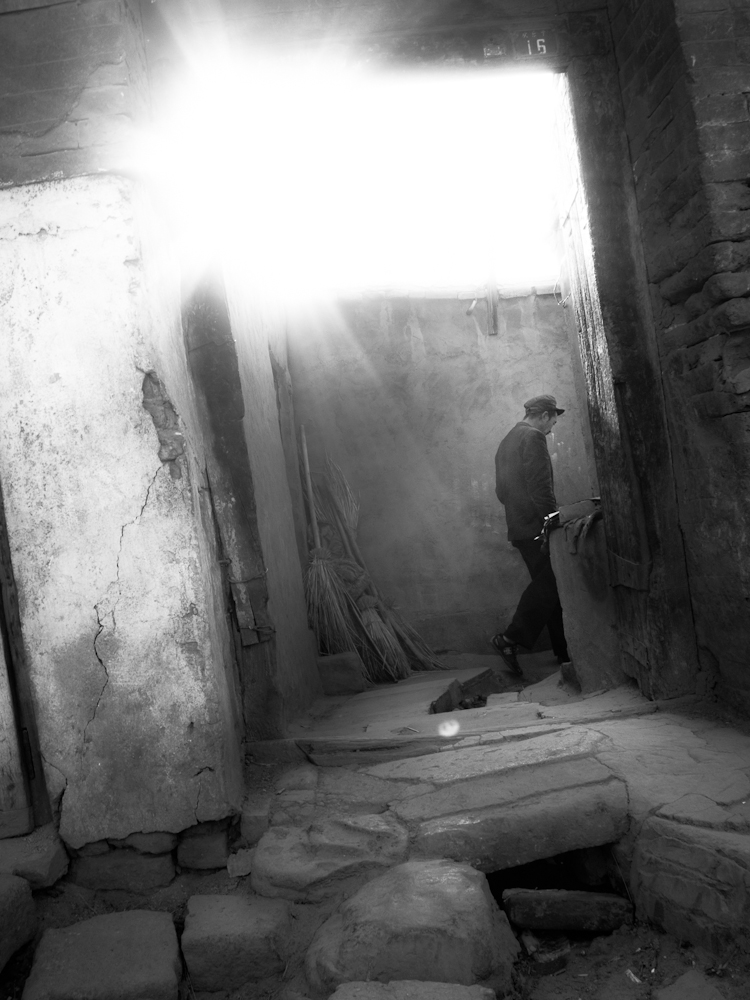








0 comments:
Post a Comment